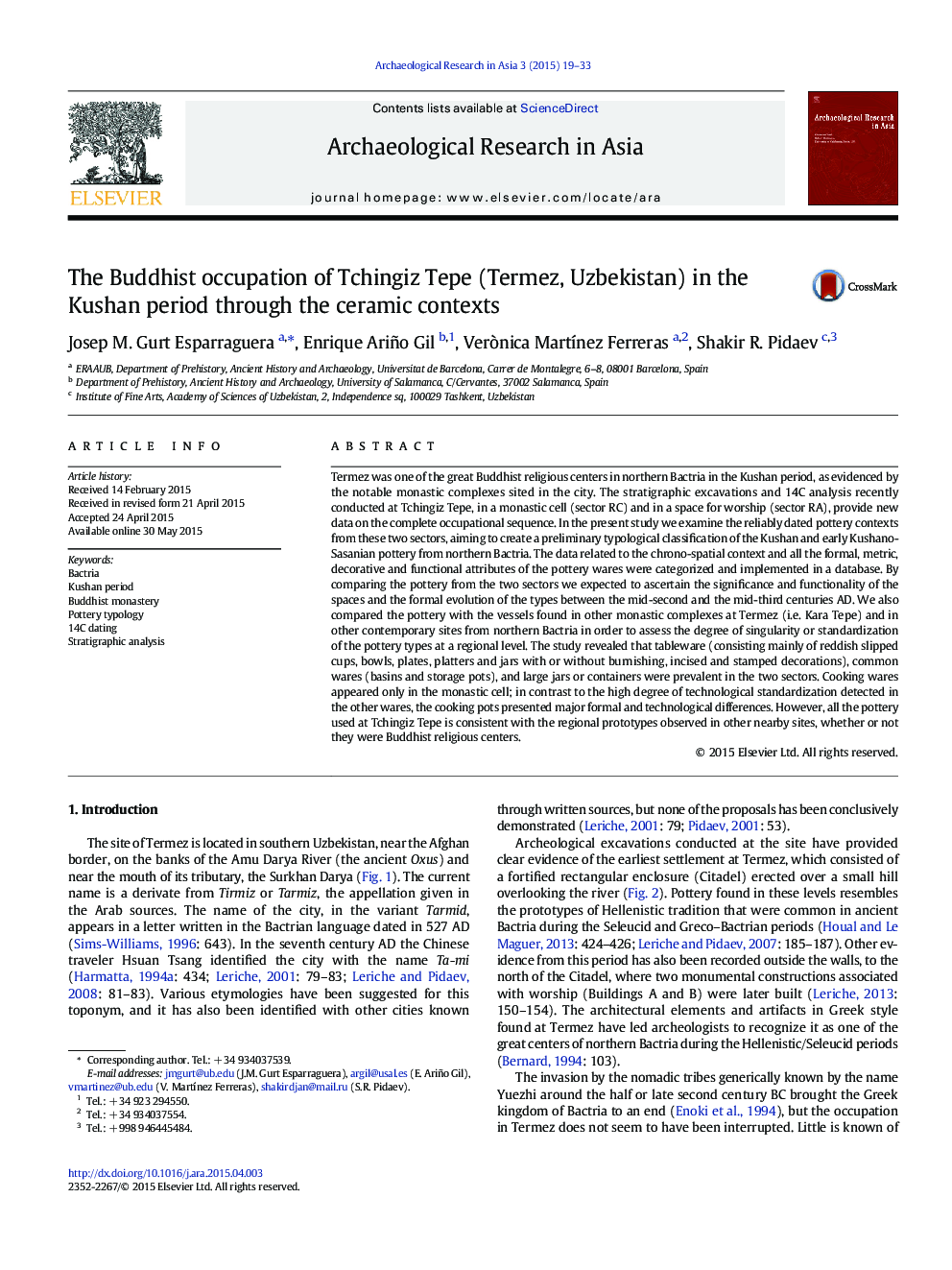| کد مقاله | کد نشریه | سال انتشار | مقاله انگلیسی | نسخه تمام متن |
|---|---|---|---|---|
| 1034172 | 1483769 | 2015 | 15 صفحه PDF | دانلود رایگان |
Termez was one of the great Buddhist religious centers in northern Bactria in the Kushan period, as evidenced by the notable monastic complexes sited in the city. The stratigraphic excavations and 14C analysis recently conducted at Tchingiz Tepe, in a monastic cell (sector RC) and in a space for worship (sector RA), provide new data on the complete occupational sequence. In the present study we examine the reliably dated pottery contexts from these two sectors, aiming to create a preliminary typological classification of the Kushan and early Kushano-Sasanian pottery from northern Bactria. The data related to the chrono-spatial context and all the formal, metric, decorative and functional attributes of the pottery wares were categorized and implemented in a database. By comparing the pottery from the two sectors we expected to ascertain the significance and functionality of the spaces and the formal evolution of the types between the mid-second and the mid-third centuries AD. We also compared the pottery with the vessels found in other monastic complexes at Termez (i.e. Kara Tepe) and in other contemporary sites from northern Bactria in order to assess the degree of singularity or standardization of the pottery types at a regional level. The study revealed that tableware (consisting mainly of reddish slipped cups, bowls, plates, platters and jars with or without burnishing, incised and stamped decorations), common wares (basins and storage pots), and large jars or containers were prevalent in the two sectors. Cooking wares appeared only in the monastic cell; in contrast to the high degree of technological standardization detected in the other wares, the cooking pots presented major formal and technological differences. However, all the pottery used at Tchingiz Tepe is consistent with the regional prototypes observed in other nearby sites, whether or not they were Buddhist religious centers.
Journal: Archaeological Research in Asia - Volume 3, July 2015, Pages 19–33
